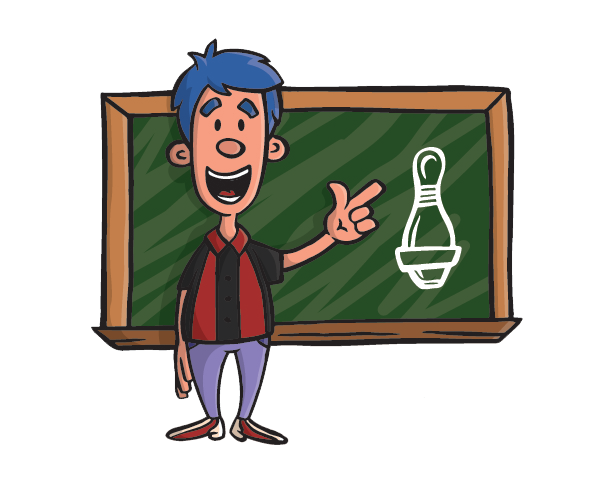Whether you have aspirations to be the next King of the Lanes, or you’re simply interested in not embarrassing yourself in front of your date, learning to bowl can begin with four (4) easy steps:
Step 1: Pick it and grip it
At just about any bowling centre you visit there will be a wide variety of bowling balls to choose from. Not only do they range in colour and design, but also in size and weight. Simply find the ball that feels comfortable in your hand, or best matches the colour of your clothing.
Gripping your selected ball properly is very important as a proper grip will help improve accuracy when the ball is delivered. If you look at the bowling ball like a clock, your four fingers should be spread somewhere between 10 and 2, while your thumb is placed at approximately 5, resulting in a comfortable grip. It is also important to not palm the ball, and instead leave a small ‘pocket’ between the ball and the palm of your hand.
Step 2: Take Aim
So you’ve selected your ball and gripped it properly, now what? At this point you should find a spot on the approach far enough from the foul line to allow you to take at least 3 steps, or approximately 2 to 3 metres.
Once situated, standing square to the pins, it’s time to find your target. While not the case for all bowlers, most will use the arrows found part way down the lane as a target instead of the pins themselves. Depending on what pins you’re aiming for, and your position on the approach, you may use different arrows to line up your shot.
Step 3: Approach and Delivery
Everything you have done so far has been building up to this point; it’s time to show what you’ve got!
The most common approaches are the 3-step, and 4-step approach. The 3-step approach is the simplest due to the corresponding arm movements that go along with each step. For the first step, the ball is placed in front of your body; followed by the second step where the bowler performs their backswing; and lastly the third step, often a slide, is the point where the bowler delivers the ball towards the pins. This process can be described as ‘Out, Back, and Through.’
When delivering the ball, it is important that the ball is rolled towards the pins, and not simply shoved on to the lane. When done properly the bowler’s arm should follow-through and continue on an upward trajectory after releasing the ball.
Step 4: Celebrate!
You may have just thrown a strike! But even if you didn’t, at least you’re having fun, and that’s the whole point. Slap someone’s hand, or do a dance move, you’re on your way to becoming a better bowler!
Language of the Lane
Count – The head pin is worth 5 points, the two pins on either side of the head pin are worth 3 points, and the two corner pins are worth 2 points. This results in each set of pins being worth 15 points.
Frame – Each frame is a bowler’s turn to play and there are ten (10) frames per game. A bowler can throw a maximum of three (3) balls per frame, but will only throw one (1) when a strike is thrown, or two (2) when the bowler gets a spare. However, in the 10th frame, the bowler throws 3 balls regardless of whether or not they’ve thrown a strike or spare in that frame.
Foul Line – A black line behind which the bowler must stand to deliver the ball. Fifteen (15) points is deducted each time a bowler crosses the line.
Turkey – Three (3) strikes in a row.
Chop-off – If after the first delivered ball only a single corner-pin and adjacent three-pin are left standing.
Split – If after the first delivered ball both of the corner-pins, as well as a single three-pin, are left standing.
Perfect Game – When twelve (12) consecutive strikes are bowled, resulting in a score of 450.
Gutter or Channel – Depressions on either side of the lane designed to guide the ball into the pit. A ball thrown in the gutter is worth zero (0) points.
Feeling ready to hit the lanes? Find a centre nearest you.
